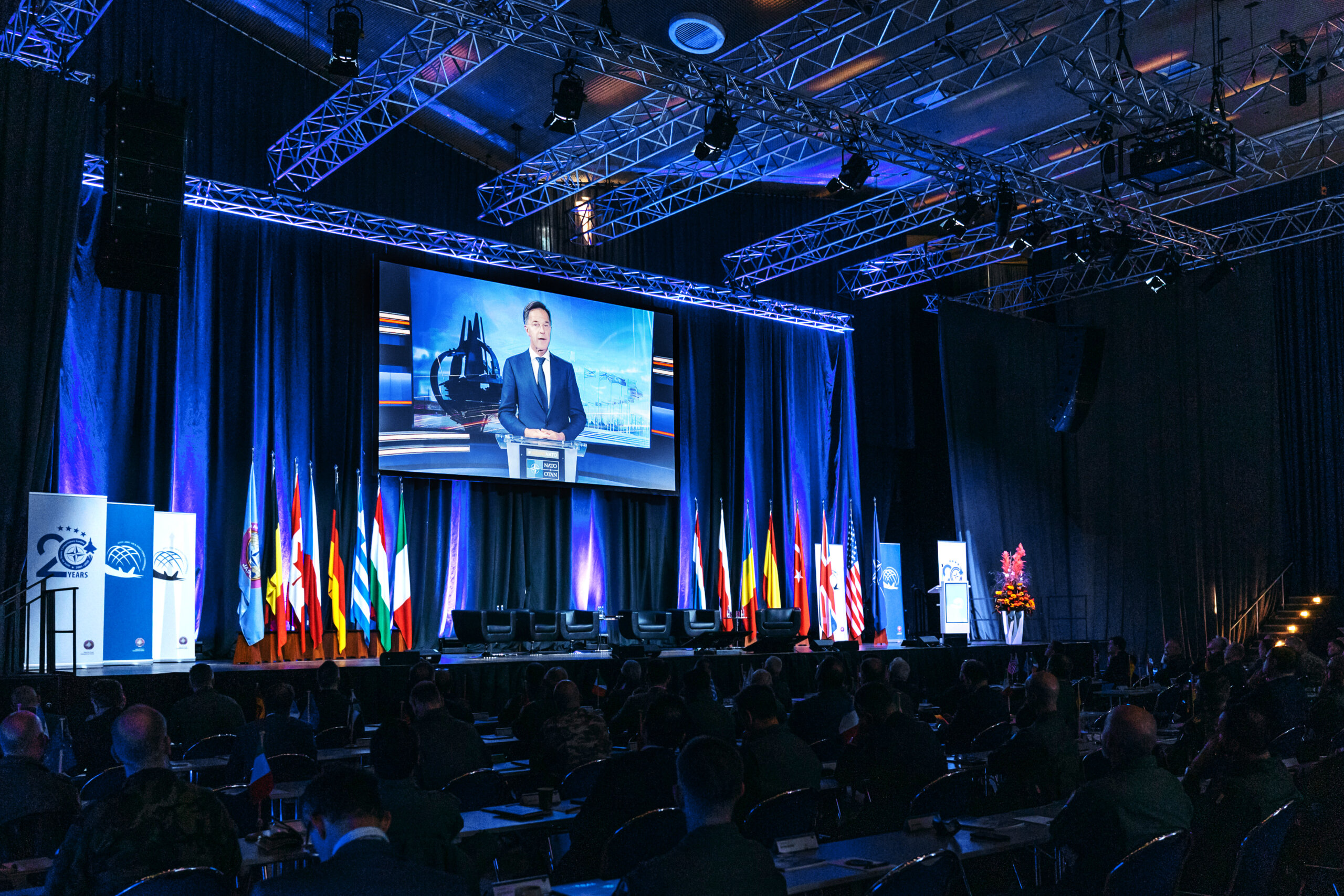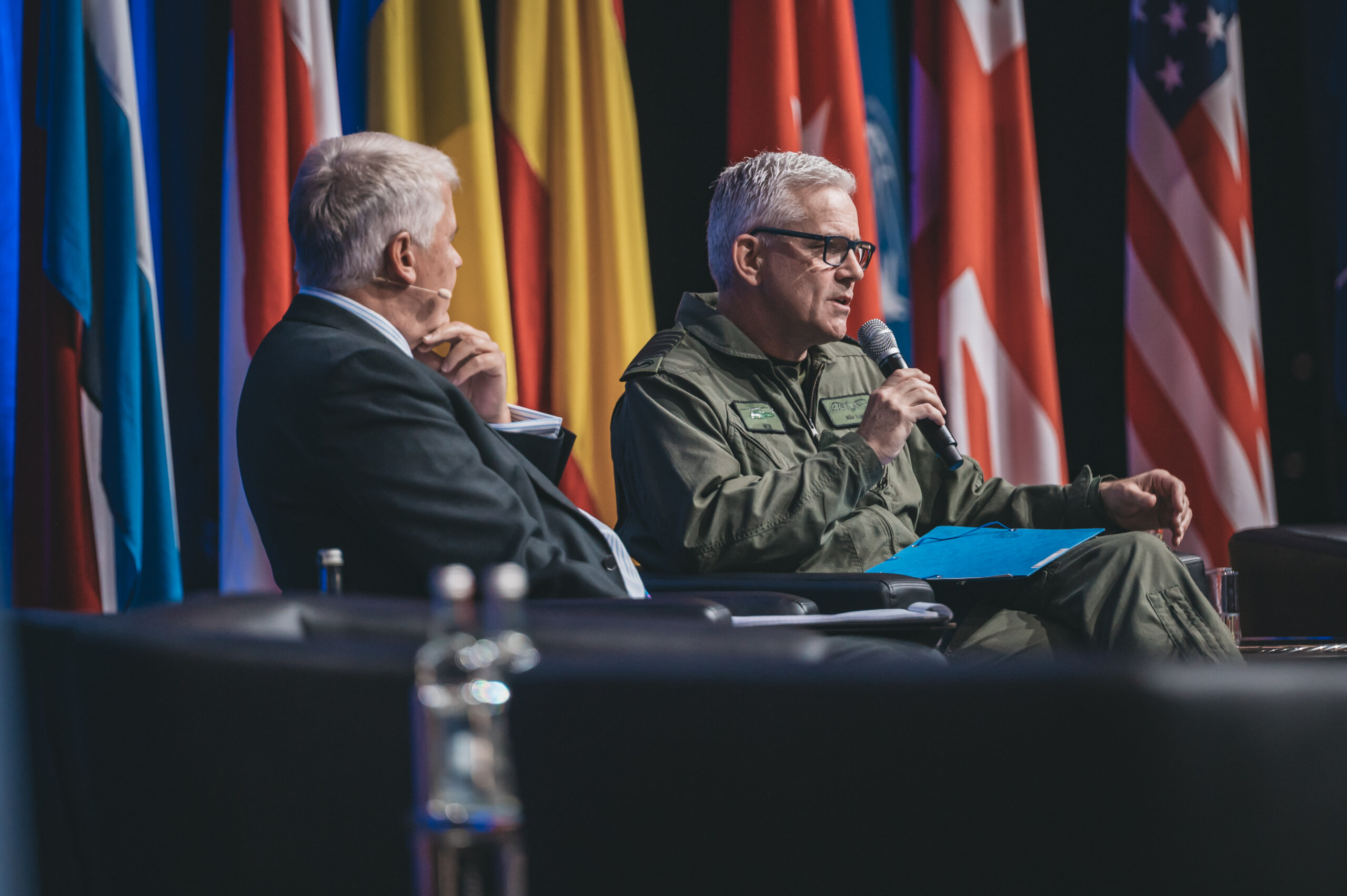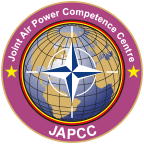Disrupting Dominance: Imperatives from the 2025 JAPCC Conference
The security landscape is shifting with unprecedented speed, and with it, the very foundations of NATO’s long-held air and space dominance are cracking. This was the unambiguous message at the heart of the 2025 Joint Air and Space Power Conference. In a fitting commemoration of the 20th anniversary of the Joint Air Power Competence Centre (JAPCC), the event convened a formidable cross-section of military leaders, policymakers, academics, and industry innovators. Gathered under the sobering theme ‘Disrupting Dominance: The Future of Air Superiority?’ the discussions were not hypothetical explorations of a distant future, but urgent examinations of a dangerous present. The conference’s move to a larger venue—set to run concurrently with the Euro Defence Expo (EUDEX) next year—is more than a logistical detail; it is a physical manifestation of the growing relevance and urgency of its mission.
A sobering recognition echoed throughout the two-day event: the traditional superiority enjoyed by NATO Air and Space Power is being actively, creatively, and effectively challenged. To prevail in this new era, the Alliance requires far more than just incremental technological upgrades; it demands a profound, and at times uncomfortable, cultural and doctrinal transformation.

The Strategic Imperative: Adapt or Cede Dominance
Opening keynotes established a clear strategic imperative with a palpable sense of urgency: NATO must fundamentally re-engineer its systems, doctrine, and culture. The era of assuming air superiority as a birthright is over, demanding a decisive return to proactive air defence fundamentals. This is not a mere shift in terminology from the relative comfort of ‘air policing’ to the harsh reality of ‘air defence’; it is a critical, existential change in mindset.
NATO’s air superiority is being squeezed from two directions in a dual disruption. First, the proliferation of low-cost, high-volume threats like one-way attack drones has democratized air power, effectively lowering the barrier to entry for state and non-state actors alike. This forces a difficult and often unsustainable cost-calculus on high-end platforms, where a multi-million-dollar missile may be the only answer to a few thousand-dollar threat. Second, peer competitors are rapidly fielding sixth-generation fighters and sophisticated autonomous systems, relentlessly closing the West’s technological and quantitative gap. In this new reality, ‘systems’ refer not to individual platforms but to the deeply interconnected webs of sensors, shooters, and data that define modern multi-domain operations.
To secure the future, reform must be swift and decisive. The Alliance needs innovation structures that move at the speed of technology, not at the pace of bureaucracy. Technology must serve strategy, challenging old assumptions about both offence and defence—the ability to not only intercept the incoming missile, the proverbial ‘arrow,’ but to possess the reach, resilience, and resolve to ‘strike the archer.’
Panel 1: Dominance Disrupted – Hard Truths and Urgent Realities
A candid examination of NATO’s internal friction revealed a persistent and dangerous institutional resistance to innovation. Despite the availability of disruptive technologies, a risk-averse culture, often paralyzed by process, slows adaptation to a crawl. The panel stressed that fostering innovation must be a leadership priority, driven by a willingness to experiment, underwrite failure, and accept calculated risks.
This internal challenge is compounded by external pressures. The traditional reliance on US airpower as a backstop is no longer a given, especially with the plausible rise of concurrent global crises that would stretch assets thin. China, for instance, is producing over one hundred J10 fighters annually, rapidly scaling their capabilities and, crucially, narrowing the quality gap in pilot training and operational tempo. European nations must prepare for scenarios where they may have to act with far greater independence and operational resilience.
Perhaps the most visceral warning concerned the critical shortage of munitions across NATO. The most advanced aircraft in the world are rendered little more than expensive parade pieces without adequate stockpiles of high-end munitions, yet production rates remain dangerously slow. This isn’t just a logistical problem; it is a strategic vulnerability of the highest order. The consensus was clear: increasing munition production and diversifying supply chains is more urgent than acquiring new platforms. The lessons from Ukraine underscore this reality, demonstrating that while legacy platforms can remain remarkably relevant with imaginative employment, air superiority remains the essential, non-negotiable enabler for freedom of manoeuvre in all domains.
Panel 2: The Tech Horizon – Integrating Mind, Machine, and Morality
The tactical and strategic landscape is being reshaped by advanced stealth, hypersonic weapons, and AI-driven autonomous systems. The proliferation of small drones was aptly likened to quantum physics versus traditional air power’s Newtonian physics—each operates with its own distinct rules, scales, and contexts, defying a single unified theory of employment or defence.
Amid this technological surge, the human dimension remains central. Ethical clarity was powerfully framed not as a constraint but as a combat enabler, asserting that a morally confident force holds a distinct and durable advantage. The profound psychological burdens of remote warfare on operators, facing life-and-death decisions from thousands of miles away, highlight the critical need for robust support systems and a leadership culture that openly addresses moral injury. While AI can enhance decision-making and reduce cognitive load, its current struggles with ambiguity and deception mean human oversight is non-negotiable. Autonomy must be constrained by clear, understandable operational boundaries to prevent catastrophic, unintended consequences.
As defence systems become fully digitized, intellectual property and data security morph into strategic, frontline assets. Collaboration with industry must balance the need for rapid innovation against the pervasive and persistent threat of economic espionage and state-sponsored cyber-attacks.
Panel 3: Reshaping NATO’s Innovation Cycles – From Bureaucracy to Battlefield Velocity
Innovation is no longer a pre-conflict luxury; it is a core, continuous warfighting function. The war in Ukraine has unequivocally proven that innovation cycles must shrink from years to weeks, with solutions often prototyped and driven directly from the needs of the front lines. The panel’s mantra was clear and unforgettable: ‘80% on time is better than 100% too late.’ This requires a radical cultural shift away from rigid, ‘gold-plated’ requirements and toward functional, adaptable, and interoperable solutions.
This agility is fundamentally a sociotechnical challenge. New technologies are useless without updated doctrine, modernized training, and flexible operational concepts to absorb them into the force. Innovation flourishes not from top-down directives but from informal, horizontal partnerships that connect military operators with engineers, academics, and small-to-medium enterprises.
Beyond accelerating its own innovation, NATO was urged to actively disrupt the cycles of its adversaries. This means aggressively protecting supply chains, securing intellectual property, and ending research collaborations that inadvertently benefit hostile actors. Autocratic regimes, despite their ability to mobilize their economies for war, are often hampered by rigid hierarchies and a deep-seated lack of trust in their personnel. NATO’s enduring advantage lies in its educated, empowered people and its dynamic private sector. Modernizing logistics and procurement is critical to leveraging this advantage, embracing modular systems and off-the-shelf solutions to deliver capabilities faster.
Panel 4: The Next Ten Years – Forging a Future-Ready Force
Looking ahead, the conference affirmed that conventional airpower remains central to NATO’s deterrence, but it must evolve significantly. Legacy systems require continuous modernization to remain credible against high-end threats, while distributed Command and Control (C2) must be perfected to function in a hyper-connected, degraded, and contested battlespace.
The future of warfare is unequivocally multi-domain. Seamless integration across air, land, sea, cyber, and space is no longer aspirational but essential for survival and success. This demands robust, resilient digital backbones and flexible command structures that can synchronize cross-domain effects in real time.
This operational shift must be supported by a whole-of-society approach to defence. Industrial readiness, resilient civilian infrastructure, and public awareness are now strategic imperatives. Citizens must understand the nature of modern threats and be prepared to contribute to national resilience. This extends into the cognitive domain, where disinformation and psychological operations constantly seek to erode morale, sow division, and undermine trust in our institutions. Proactive, transparent strategic communication is NATO’s primary defence against cognitive warfare, reinforcing the will to fight that ultimately underpins all military capability.

Conclusion: The Time for Action is Now
The 2025 JAPCC conference delivered a powerful, unambiguous call for urgency. As one presenter stated, ‘We must innovate quickly AND with our brains connected.’ The challenges of the next decade—hybrid warfare, technological disruption, and relentless peer competition—are already here. NATO must accelerate its evolution, embracing distributed C2, deep multi-domain integration, and agile collaboration with industry.
Cohesion must be re-engineered through deliberate interoperability, shared doctrine, and a renewed commitment to collective defence. Equally vital is the human dimension: fostering the resilience of our people, communicating strategically with our populations, and strengthening the collective will to defend democratic values. The challenge is clear and monumental: to adapt not only our tools but our thinking, our institutions, and our culture. The time for comfortable deliberation is over; the time for decisive, unified action is now.














